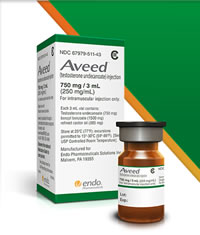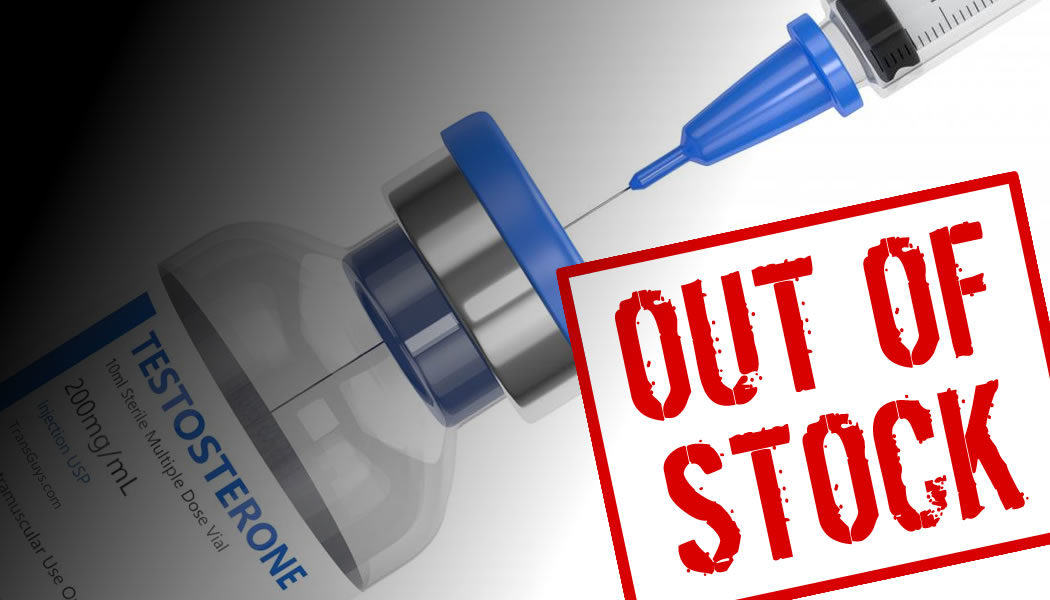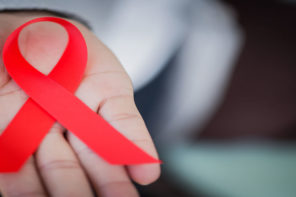The anticipated 12 month testosterone shortage in Italy announced last March is more than alarming: it’s a wake up call. The frequency and duration of testosterone shortages have been on the rise globally for the last decade. If you think this couldn’t happen to you, then you haven’t been paying attention. This investigative report will help you get informed so that you know what to do when a testosterone shortage hits your area.
Skip to:
- Left Without Options, Italian Trans Men Turn To Underground Labs For Testosterone
- Multiple Testosterone Shortages Hit Australia
- National Testosterone Shortage in South Africa Causes Panic
- Recurring Testosterone Shortages in Canada and the United States
- But It’s Never Happened To Me!
- The Booming Testosterone Industry
- Follow the Money
- 10 Ways To Avoid Getting Caught Up In a Testosterone Shortage
Left Without Options, Italian Trans Men Turn To Underground Labs For Testosterone
“We gathered in front of the PC and we ordered a hundred vials from an Indian site.”–Daniele, 45 year old trans man in Italy.
Sadly, this is what it’s come to for Italian trans guys: having to illegally order testosterone from an underground lab in India.
“Many people resort to websites selling testosterone illegally on the Internet or at local gyms,” Michele Formisano, president of Italian trans advocacy group CEST, told Gay Star News. “It’s hormones we’re talking about. They often have no idea of what they’re about to inject themselves with.”
According to Libby Baney, executive director of the Alliance for Safe Online Pharmacies and a lawyer specializing in the regulation of the healthcare supply chain, people are taking a big risk when they order prescription medications through most online pharmacies. “One in two of these pharmacies are selling counterfeit medicine,” she says, citing a report by the World Health Organization.
Testoviron, manufactured by the German pharma giant Bayer, is the most affordable testosterone formulation on the market in Italy and not surprisingly, the testosterone of choice for Italian trans guys. When Testoviron disappeared from the shelves in September 2018, two things happened: first, fake Testoviron started popping up in various parts of the world, prompting a warning from the Israeli government, and shortly thereafter, Sustanon, the injectable alternative to Testoviron in Italy, also became unavailable.
This domino effect is common during testosterone shortages: the main product disappears, and people flock to the alternative which catches its manufacturer off guard and unprepared to handle the demand, leading to another shortage. In places like Canada where there are only two injectable formulations of testosterone on the market, the shortage becomes a complete outage.
Multiple Testosterone Shortages Hit Australia
The dire situation in Italy is not unique. Australia has also been in the thick of testosterone shortages this year. Plus, despite protest from trans Australians saying that the move would make it unaffordable, Primoteston was removed from Australia’s Pharmaceutical Benefits Scheme (PBS) in January 2018, meaning it would no longer be subsidized.
“I have gone weeks without this medication because I was so broke that I couldn’t afford it at its full cost price, and I know many people do the same thing.” – A trans person from Western Australia
“Primoteston is the preferred method of hormone replacement therapy [in Australia]. Once the PBS remove it, trans people will be stuck with choosing between paying exorbitant prices for Primoteston or relying on an inferior method with greater side effects,” said Kai Schweizer, a trans advocate in Western Australia. “In Western Australia we have a serious issue with trans people accessing black market and illegal hormones and this change will likely serve to exacerbate the problem.”
As the dominos began to fall, Reandron was the next injectable testosterone to go out of stock. Then came an announcement that Primoteston, also manufactured by Bayer, would be unavailable for up to a year, affecting an estimated 20,000 Australians.
Besins Healthcare, the manufacturer of Testogel stepped in with reassurance that their products would remain unaffected by the shortages.
“We want to assure clinicians concerned by supply shortages of injectable testosterone products that Testogel is unaffected by these shortages,” said Geoff Blundell, Managing Director of Besins Healthcare.
That turned out to be short-sighted.
Following the sudden withdrawal of Axiron transdermal testosterone gel made by Eli Lilly late last year, Testogel sachets became subject to a global supply shortage. In March, it was announced that Testogel will be unavailable in Australia for several months.
National Testosterone Shortage in South Africa Causes Panic
Trans men in South Africa also experienced a four month nationwide shortage of testosterone earlier this year. Fearful and frustrated, a group of trans activists and allies created a petition and also released a statement detailing the effects of the “abrupt withdrawal” from testosterone on people’s health. These included: loss of muscle mass, redistribution of body fat, recurrence of the menstrual cycle, possible psychological and emotional distress that could cause or worsen gender dysphoria, and long-term complications related to bone and cardiovascular health in some cases.
“This has HUGE health implications for us,” wrote South African blogger Germaine de Larch. “It’s a hormone, so it controls a multitude of body functions. It controls moods, and with a large number of trans people struggling with depression, this has serious health implications. The trans community [in South Africa] is in a panic. This is completely fucking unacceptable.”
Alternatives to Depo-Testosterone were not readily available. Both Nebido and Sustanon are prohibitively priced in South Africa. De Larch couldn’t afford Nebido so he bought testosterone on the black market. “There’s no medical insert in the packaging and no medical information whatsoever on the website as to the contents of the stuff. But I have no option.”
“I’ve been off testosterone for nearly two months now and I have been experiencing severe depressive episodes that make it difficult for me to perform simple task, because of the fatigue and moodiness caused by low T levels. I haven’t been able to sleep much, and I wake up with anxiety every morning, because my hormones are all over the place. But I am relieved that my menses haven’t returned.” — Lwazi Mbokazi, trans man from KwaZulu-Natal, South Africa
In Venezuela, where finding hormones outside the black market is now impossible, one transgender man told BBC Mundo he once bought what he believed was testosterone online, but it turned out to be vegetable resin. He said lumps started forming in his buttocks after he injected it. Getting a shot of untreated mineral oil could result in an abscess, severe cellulite or septicemia, says Dr. Luis Madrid, a surgeon and psychiatrist specializing in transgender health in Caracas.
Recurring Testosterone Shortages in Canada and the United States
Canada and the United States are not immune to testosterone shortages either. In fact, there’s currently a confirmed shortage of Depo-Testosterone in Canada. It started in June and is expected to be resolved in September. There’s also a shortage of the nasal testosterone gel, Natesto, in Canada. These follow several shortages of Androgel, Testim and Taro testosterone gels earlier this year.
In the United States, there’s currently a confirmed shortage of T. enanthate, for the second time this year. There have also been anecdotal reports throughout the summer of a Depo-Testosterone shortage, though this hasn’t been confirmed by the FDA.
But It’s Never Happened To Me!
Testosterone shortages are actually quite common but not everyone will “feel the pinch” of a shortage. People who live in big cities tend to be less affected because big urban pharmacies stock a lot of testosterone and can continue filling prescriptions throughout a shortage. Conversely, people in small cities and rural communities are at a greater risk of being affected by a shortage because smaller pharmacies don’t tend to stock a lot of testosterone. When the pharmacies near you run out of testosterone and can’t order more from their distributor, that’s when YOU will be affected.
The Booming Testosterone Industry
In general, drug shortages have been a growing problem in Canada and around the world. Dr. Jacalyn Duffin, a Canadian medical historian and hematologist who researches drug shortages and runs the CanadaDrugShortage.com website, noted that the growing problem of drug shortages was known to both patients and physicians as early as 2010. She says that 75% of doctors hypothesized Big Pharma manipulation as the root of the problem.
Testosterone has become one of the most widely prescribed medications in the U.S., increasing five-fold according to 2011 data. According to one study, nearly four percent of men in their 60s are taking testosterone. The number of men between 40 and 64 went up 77 percent from 2010 to 2013 to 1.5 million men.
The reason for the growth of the testosterone replacement therapy (TRT) sector of the pharmaceutical industry can partly be attributed to the continued growth of the population over 65 years of age as well as a greater awareness of medical issues associated with low testosterone and aging.
‘T,’ (as it is known) is, by most accounts, as close to a direct anti-aging medication as science has yet produced. It can be manufactured cheaply in large quantities, and the risks seem manageable for most people. Users report increased energy, more muscle mass, decreased body fat, greater sex drive, and a general sense of well-being. In short, it’s one of the most transformative substances a human can take. — Splinter News
The popularity of testosterone opened the doors for the blossoming of a booming industry for entrepreneurial doctors with “age management” practices. Chains of low-T clinics exploded all over the U.S., especially across the South. This resulted in the dramatic growth of the TRT sector from $18 million (USD) in the 1980s to $2 billion in 2013.
All was not rosy though. In 2014, testosterone use was reported to be linked to heart attacks and strokes and the FDA issued a safety bulletin. This caused a staggering 48 percent decrease in testosterone prescriptions in established users and a 62 percent decrease in new users between 2013 and 2016.
Follow the Money
Presumably, the sharp drop in testosterone use deeply cut into the profits of manufacturers and left them looking for ways to boost sagging sales.
Comparatively speaking, injectable testosterone is a cheap drug that produces limited profits. Marketed as more convenient, transdermal and sublingual formulations of testosterone are always more expensive in the U.S. and generate more profit for their manufacturers, with one notable exception: Aveed.
 Aveed is the U.S. equivalent to the long-acting injectable testosterone formulation known in other parts of the world as Nebido, and it was approved by the FDA in 2014. Aveed is touted as having “major advantages” over T. cypionate and T. enanthate, including fewer injections (every 2 to 3 months), less fluctuation in testosterone levels, and possibly less risk of erythrocytosis. For its manufacturer, Endo Pharmaceuticals, the advantage is a lot more profit: 1 vial (3ml) of Aveed 750mg/3ml costs more than $880 USD. That’s for a single dose!
Aveed is the U.S. equivalent to the long-acting injectable testosterone formulation known in other parts of the world as Nebido, and it was approved by the FDA in 2014. Aveed is touted as having “major advantages” over T. cypionate and T. enanthate, including fewer injections (every 2 to 3 months), less fluctuation in testosterone levels, and possibly less risk of erythrocytosis. For its manufacturer, Endo Pharmaceuticals, the advantage is a lot more profit: 1 vial (3ml) of Aveed 750mg/3ml costs more than $880 USD. That’s for a single dose!
At the time of the FDA approval, Endo Pharmaceuticals also manufactured Delatestryl, an affordable T. enanthate injectable formulation, as well as Fortesta testosterone gel. Fast forward to 2018, and Endo had not only added other expensive testosterone formulations to their product roster—Striant sublingual testosterone, Testopel pellets and Testim gel—but they also stopped selling Delatestryl.
This phasing out of cheap injectable testosterone should concern you.
2027 is when things could get interesting. That’s when the patent on Aveed expires and competitors will be free to enter the market with their own generic version of Aveed. The price will assuredly be lower than it is today but higher than what T. cypionate and T. enanthate cost—assuming those formulations are still around.
10 Ways To Avoid Getting Caught Up In a Testosterone Shortage
There’s zero indication that testosterone shortages are going away, so it’s important to arm yourself with information so that you know what to do when a shortage strikes.
1. The best way to avoid a testosterone shortage is to not let yourself run out of T to begin with. It’s a good idea to always keep a backup vial around, but this is becoming harder to do in many areas of the U.S. where 10ml and 5ml vials are no longer dispensed and only 1ml vials are available. (Seemingly all of the sudden, pharmacies are enforcing the 28-day rule that calls for multi-dose vials to be discarded 28 days after first use.) If you can, leave a spare vial in your emergency kit, and order your testosterone prescription refill BEFORE you actually run out of T!
2. Get informed about the shortage. Talk with your pharmacist and look up information about the shortage online. You may be able to find out when the shortage is expected to end. In the U.S., you can use this USA Drug Shortage Search tool.
In Canada, check here.
3. Take your prescription to another pharmacy. Pharmacies don’t all run out of testosterone at the same time, so if your pharmacy can’t fill your prescription crack the phone book and start calling all the pharmacies in your area, even pharmacies in nearby cities if you have to. You’ll probably need to see your doctor to move your prescription to a different pharmacy.
4. Switch to another brand or formulation. This can be harder to do than it sounds. First, you’ll have to see your doctor for a new prescription. Don’t delay as it’s unlikely that you’ll be the first in line for the alternative brand or formulation and what often happens during a shortage is that the alternative product also becomes unavailable due to increased demand.
In Canada, there are just two brands of injectable testosterone available: Taro’s Testosterone Cypionate (which replaced Pfizer Depo-T when Pfizer pivoted to making Covid vaccines) and Bausch Health’s Delatestryl (T. enanthate.) They have different concentrations of testosterone requiring a different dosage, as well as different suspension oils which some people are allergic to. If you obtain an alternative brand or formulation, be sure to read the label carefully and compare it to what you normally take.
Switching between different delivery methods, ie. intramuscular vs transdermal, can also lead to difficulty in maintaining stable hormone levels and it can take months for your body to adjust to the switch.
“Switching back and forth between different products is not ideal, and many doctors do not have experience in prescribing the different forms of testosterone,” said Dr. Anastacia Tomson during the recent South African shortage.
Of course, be prepared to pay more as all the alternatives to T. cypionate and T. enanthate will be more expensive.
“I noticed a difference when I switched from Reandron to Testex, but this [shortage] is much worse. It’s not just about getting my period back, which is bad enough because it means reliving everything I’ve struggled to get away from, it’s about general changes in my body. I feel more sluggish and tired. And I’ve put on weight.” —Yerai, transgender man in Spain
5. Check with your local trans health clinic. If you have access to a trans health clinic, you may find that they keep some testosterone on hand and can give you shots during a shortage (provided you have an existing prescription.)
6. Get injectable T compounded. Only certain compounding pharmacies can make injectable testosterone so you’ll need to search around. Depending on where you live in the U.S., New Era Pharmacy in Portland, OR may be able to ship to you. Some downsides are that the accuracy of testosterone concentrations in compounded T has been questioned and compounded injectable testosterone can cost twice as much as what you’re used to spending on testosterone.
7. Get T from a friend. This is illegal and would likely be frowned upon by your prescribing doctor, but when times are tough sometimes you gotta do what you gotta do.
8. Ration your supply of testosterone. If you can reduce your dosage or frequency of injections, you might be able to ride out the shortage, but you probably won’t feel 100%.
9. Patience. If a testosterone shortage isn’t expected to last very long, you might be able to just wait it out. Symptoms of low T will start to creep up as soon as two weeks after a shot.
10. Underground labs. This is illegal and not recommended. Buying testosterone from a rogue internet pharmacy is a dangerous way to obtain medicine, but when you’re left without options the risks can look a little less menacing. If you’re forced to resort to this, you absolutely must purchase a testosterone testing kit.
Hopefully, you’ll never feel the effects of a testosterone shortage, but if you do, at least you’ve got a game plan now.
Have you experienced a testosterone shortage? Share your comments below!
Last updated: 09/14/22




